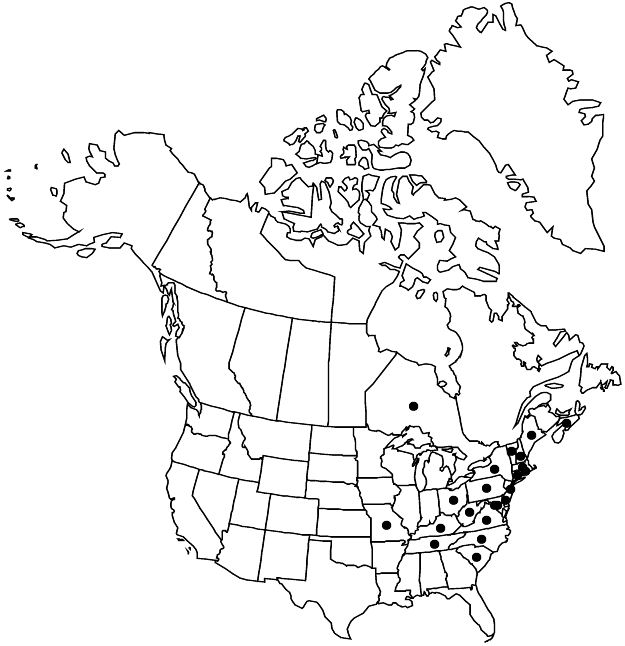Difference between revisions of "Potentilla canadensis"
Sp. Pl. 1: 498. 1753.
FNA>Volume Importer |
imported>Volume Importer |
||
| (2 intermediate revisions by 2 users not shown) | |||
| Line 67: | Line 67: | ||
|publication year=1753 | |publication year=1753 | ||
|special status=Endemic | |special status=Endemic | ||
| − | |source xml=https:// | + | |source xml=https://bitbucket.org/aafc-mbb/fna-data-curation/src/2e0870ddd59836b60bcf96646a41e87ea5a5943a/coarse_grained_fna_xml/V9/V9_191.xml |
|subfamily=Rosaceae subfam. Rosoideae | |subfamily=Rosaceae subfam. Rosoideae | ||
|tribe=Rosaceae tribe Potentilleae | |tribe=Rosaceae tribe Potentilleae | ||
Latest revision as of 22:54, 5 November 2020
Rootstocks erect, stout, 0.5–2 cm. Stems initially ascending to erect, soon becoming prostrate, flagelliform, not branched, eventually rooting at some nodes, (0.3–)0.5–12 dm. Basal leaves ± persistent, usually palmate, 2–9(–11) cm; petiole 1–7(–8) cm, long hairs abundant to dense, appressed to spreading, 1.5–3 mm, mostly ± weak, glands absent or sparse; leaflets (3–)5(–7), central mostly ± obovate to cuneate, sometimes narrowly so, (0.5–)1–4(–6) × (0.5–)0.8–2(–3) cm, distal 1/2 of margin incised 1/4–1/3 to midvein, teeth 2–7 per side, surfaces similar to ± dissimilar, abaxial green to silvery white, sparsely to densely hairy, adaxial green, sparsely to moderately hairy. Cauline leaves 0–1 proximal to 1st flowering node, not fully expanded at anthesis, usually palmate, 2–7(–9) cm; petiole (0.5–)1–6(–7.5) cm; leaflets (3–)5, ± resembling those of basal leaves, apex rounded to obtuse. Inflorescences solitary flowers at stolon nodes. Pedicels (1–)2–5(–9) cm. Flowers 5-merous; epicalyx bractlets linear to lanceolate-elliptic, (2–)3–5(–6) × 0.8–1.5 mm, slightly smaller than to ± equal to sepals; hypanthium 2.5–5 mm diam.; sepals (2–)3–5(–6) mm, apex acute; petals 4–6(–8) × 3.5–6.5(–8) mm, apex rounded to slightly retuse; stamens ca. 20, filaments 0.5–2 mm, anthers 0.4–1 mm; carpels 20–40, styles 0.8–1.4 mm. Achenes 1.2–1.4 mm, smooth. 2n = 28.
Phenology: Flowering late Mar–early Jun.
Habitat: Dry flats and slopes in lawns, pastures, roadsides, cherty slopes, dry meadows, edges of oak and conifer woodlands, often on acidic soil
Elevation: 0–1500 m
Distribution

N.S., Ont., Conn., Del., D.C., Ky., Maine, Md., Mass., Mo., N.H., N.J., N.Y., N.C., Ohio, Pa., R.I., S.C., Tenn., Vt., Va., W.Va.
Discussion
A cream-colored form (ochroleuca) was described from a now-obliterated site in Massachusetts (M. L. Fernald 1931).
Selected References
None.